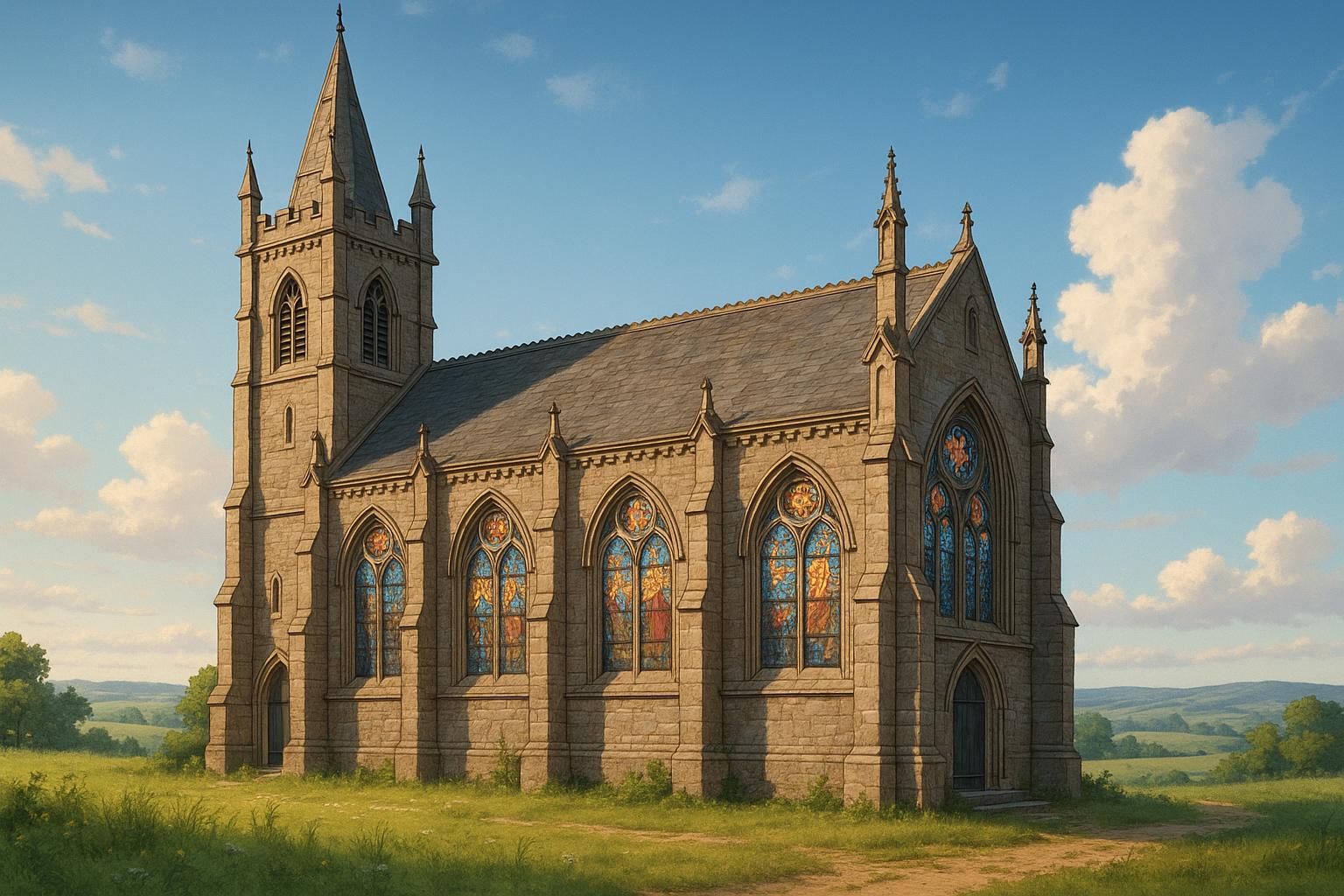In the realm of property auctions, unique opportunities often arise, particularly in the form of former churches and chapels, which present possibilities for imaginative restoration or redevelopment. A striking example is the upcoming auction of St John’s Church in Llangwm, Monmouthshire, offered with a guide price of £20,000. This listing captures the attention of potential buyers not only due to its attractive price, which is significantly lower than that of many conventional homes, but also because of its rich history and the picturesque Welsh countryside it sits within.
St John's Church is a Grade II listed structure, indicative of its historical significance. This status, granted in 2000, recognises it as a well-preserved example of a Victorian rural church with roots dating back to medieval times. The church's Gothic Decorated style, predominantly rebuilt in the mid-19th century, incorporates architectural features from its original medieval structure, such as the gable entry and a beautifully restored rood screen from 1871. Notably, the property boasts charming period elements including stained glass windows, a beamed ceiling, and an intricately crafted pulpit made by a former churchwarden.
The local landscape enhances the appeal of the property, with panoramic views of the Monmouthshire countryside contributing to its idyllic charm. However, prospective buyers should approach the auction with an awareness of certain stipulations related to the sale. While the surrounding graveyard is not included in the sale—maintained under separate ownership—there is some outdoor space available for creating a garden, adding potential for personalisation and outdoor enjoyment.
Moreover, any renovation plans will require careful navigation through planning permissions. Currently classified under Use Class D1, which pertains to non-residential institutions, the church may be transformative into a private residence or community space, pending local authority approval. Consultation with local planning offices is essential for buyers who envision changes to the building's use. Huw Edwards, head of property auctions at Seel & Co, emphasises the importance of understanding these opportunities and any attached covenants that may affect development.
The allure of such unique properties extends beyond the immediate prospect of homeownership; they often come with the promise of revitalisation dealing with creativity and respect for heritage. Previous examples from the auction market, such as a former Presbyterian church in Maesteg, which had already acquired planning consent for conversion into residential units, reveal the potential transformations these buildings can undergo. Another case involved a church in Ynysybwl that included features like high ceilings and balcony seating, effectively merging historical architecture with modern living.
As auction day approaches, with bidding slated to begin on 9 June and concluding on 10 June, the excitement around St John’s Church is palpable. It represents not merely a building but also an opportunity to engage with history, community, and architectural beauty—all at a price that may well be considered a bargain in today's property market.
In summary, while the allure of acquiring a historic building like St John's Church is strong, potential buyers must be mindful of the responsibilities and requirements tied to such a purchase. This blend of charm, history, and potential transformation continues to attract interest in Wales’ auction markets, making it a fascinating time for property enthusiasts and investors alike.
Reference Map
- Paragraphs 1, 2, 3, 4
- Paragraphs 5, 6
- Paragraph 7
- Paragraph 8
- Paragraph 9
Source: Noah Wire Services
